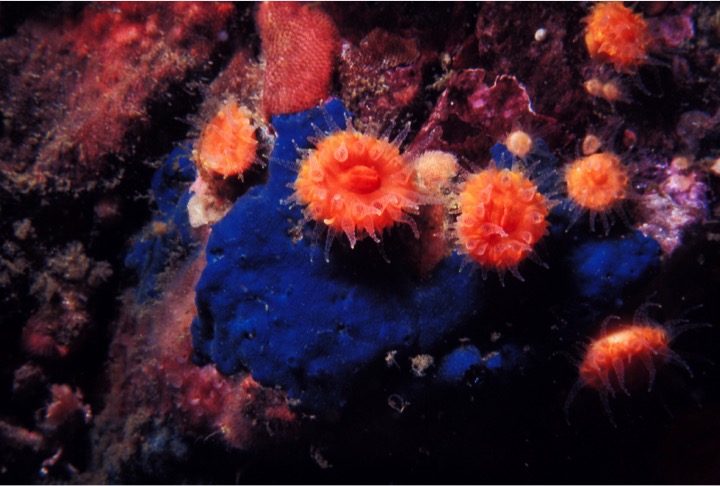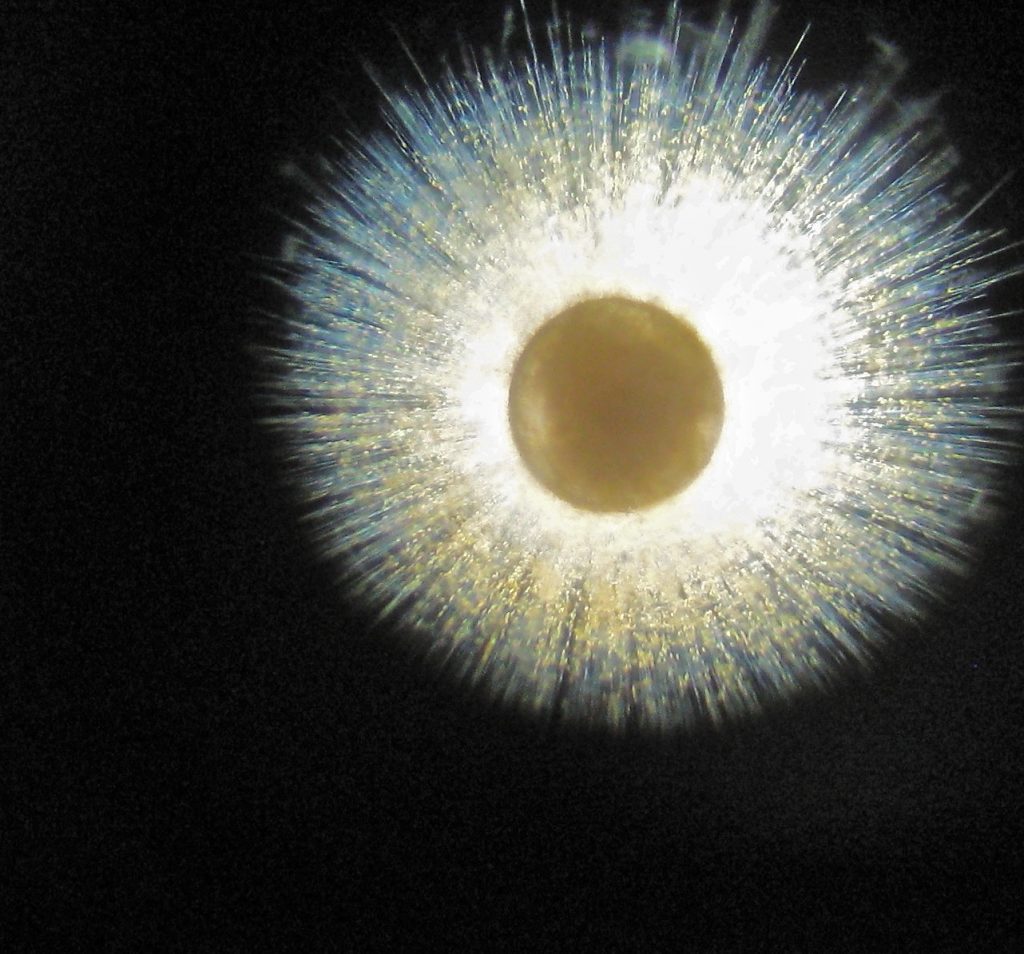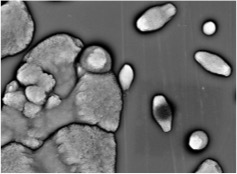
Biomineralization in Coral
A mechanistic understanding of biomineralization can help predict how coral reefs will behave in a future ocean, and through a better understanding of paleoproxies, can uncover the role of the ocean in past climate change. The orange cup coral (Balanophyllia elegans), which is native to the west coast of the USA, is one model system that we use to understand the goechemical mechanisms of calcification We are also developing a record of recent ocean acidification from preserved samples of this beautiful coral. Photo by Bob Evans.

Whole Atoll Biogeochemistry
How will reefs in a future acidified ocean function? What are the tipping points? How effective are interventions or mitigation strategies. To answer these questions, we work on the pristine atoll of Tetiaroa in French Polynesia using chemical oceanography, isotope geochemistry, modeling, and a lot of plumbing. In one project we are transferring carbon dioxide from an abundant supply of deep-ocean water to a portion of the reef in order to simulate a reef of the future. In other projects we are developing new isotope indicators to follow ecosystem shifts on reefs. This is a collaboration with Julian Sachs (UW) in partnership with the Tetiaroa Society and is generously funded by James and Marsha Seeley.

Paleoproxies in Foraminifera
The preserved calcium carbonate skeletons of foraminifera are one of the most widely used archives in paleoceanography. Using a geochemical approach in cultured foraminifera we test the mechanistic basis of proxies for past ocean conditions and past climate in these tiny shells. We particularly focus on the ways that mineral growth kinetics, organic-mineral interactions, and ion transport influence skeletal composition.

Fundamental Units of Skeletal Growth in Coral
Coral skeletons are built through a repeated cycle of nucleation followed by overgrowth and thickening. Nucleation is an integral part of the calcification process, modulating the pattern and pace of skeletal growth in both adult and juvenile coral. Using flow cells we measure the rates of calcium carbonate nucleation in both aquarium cultured coral and inorganic mineral growth experiments.

